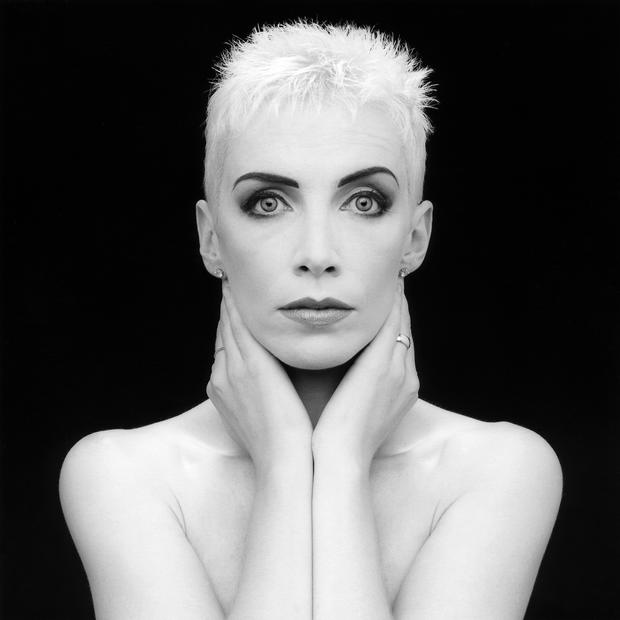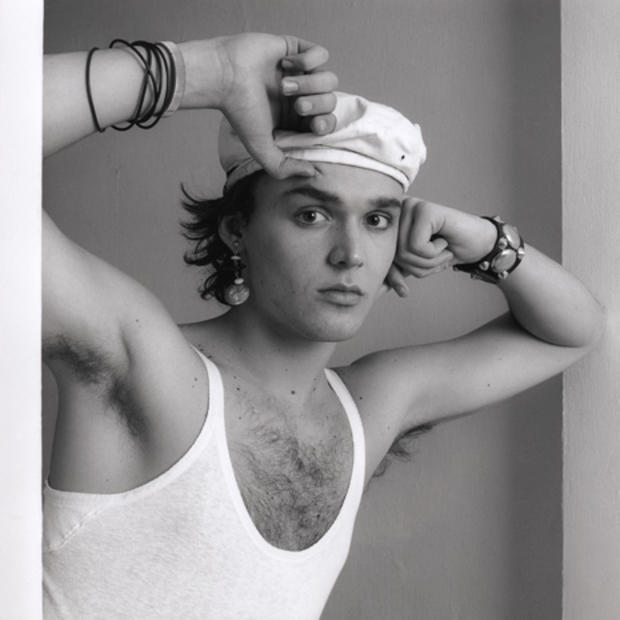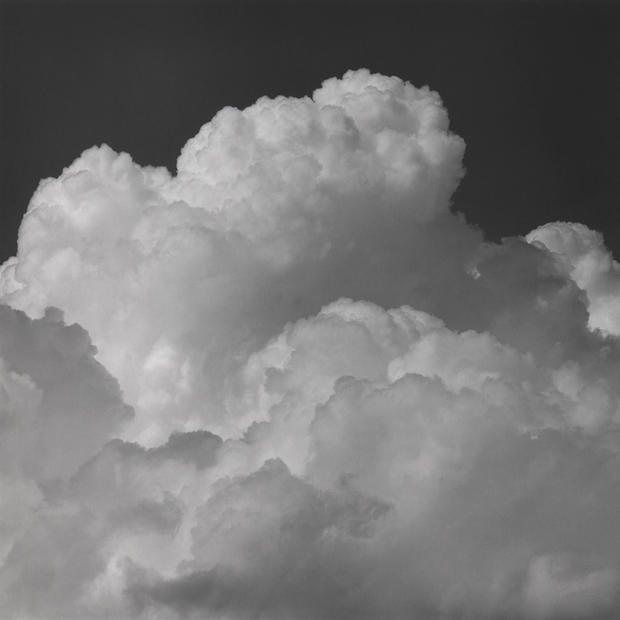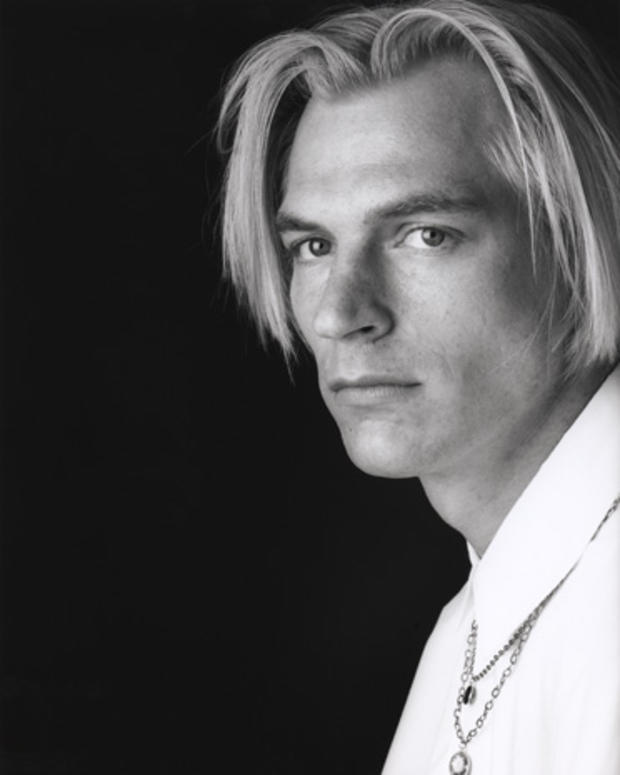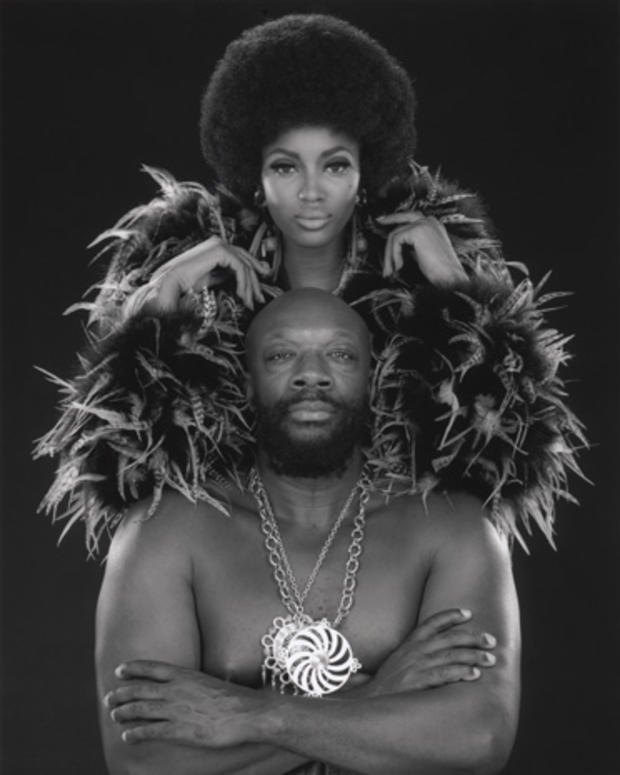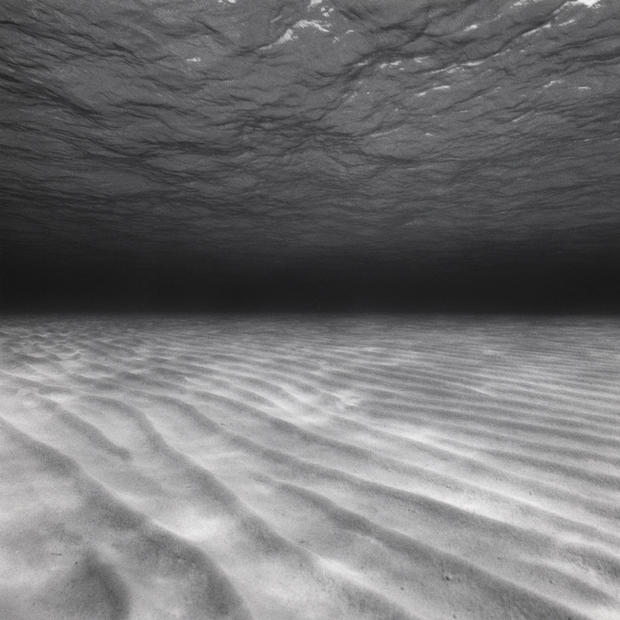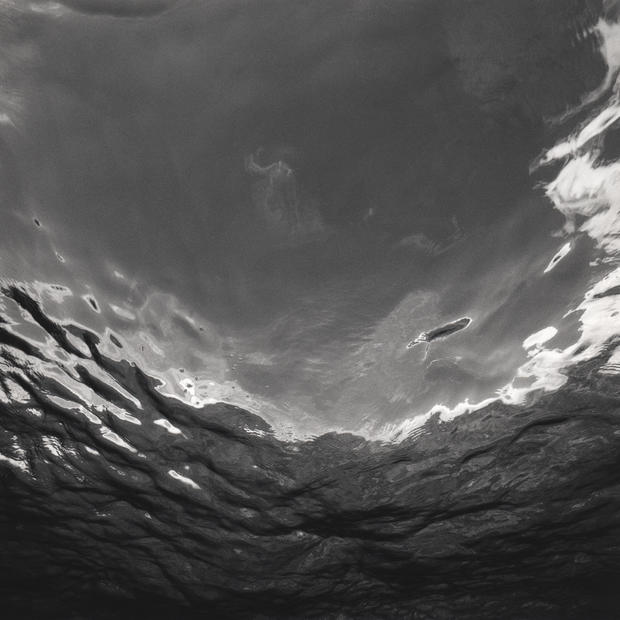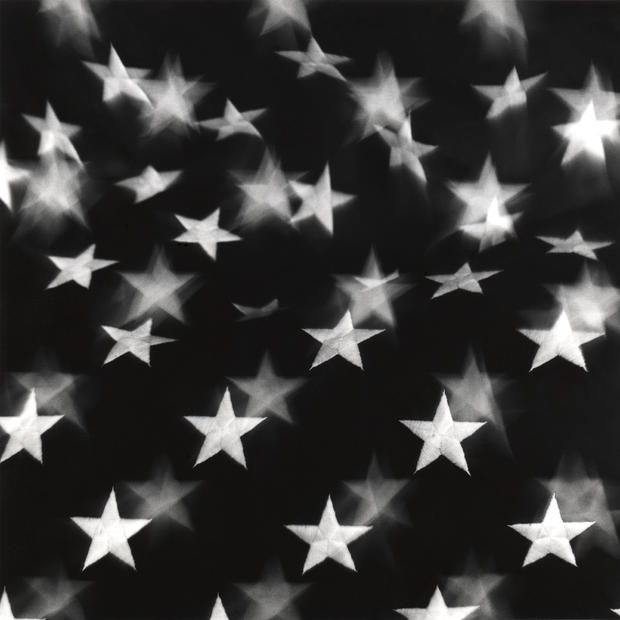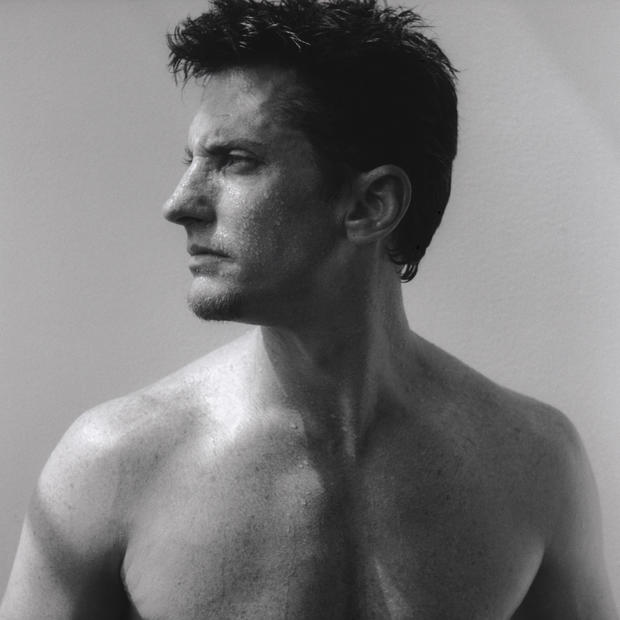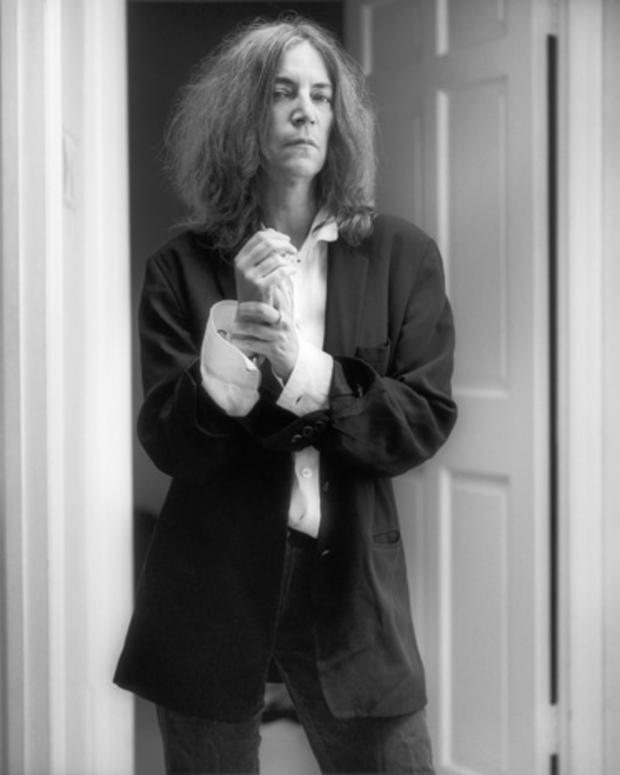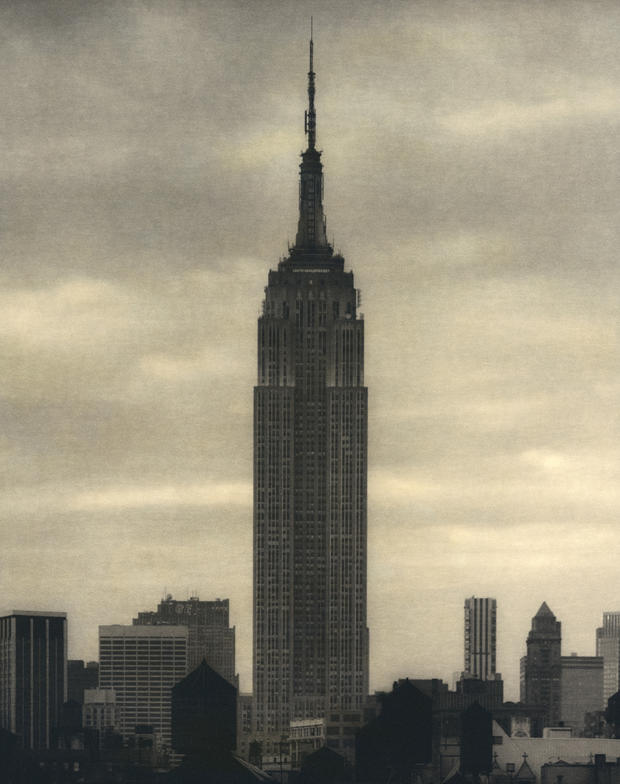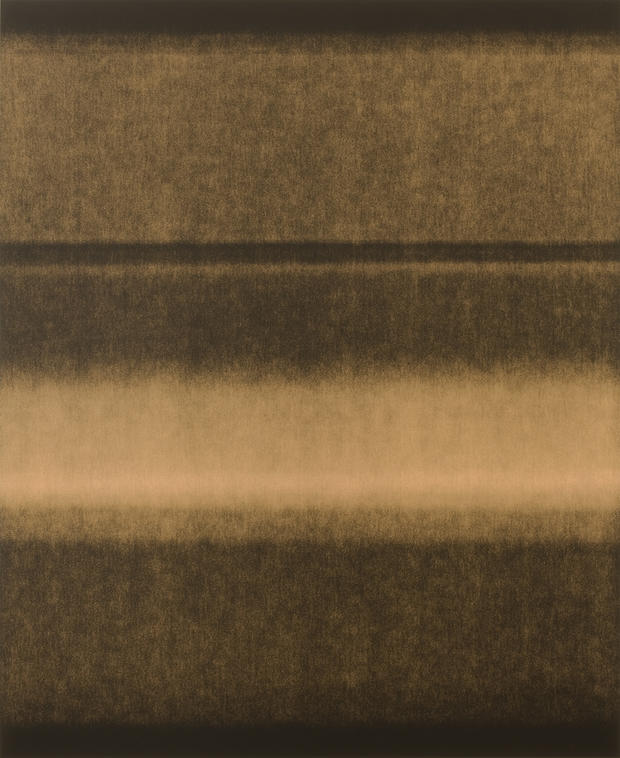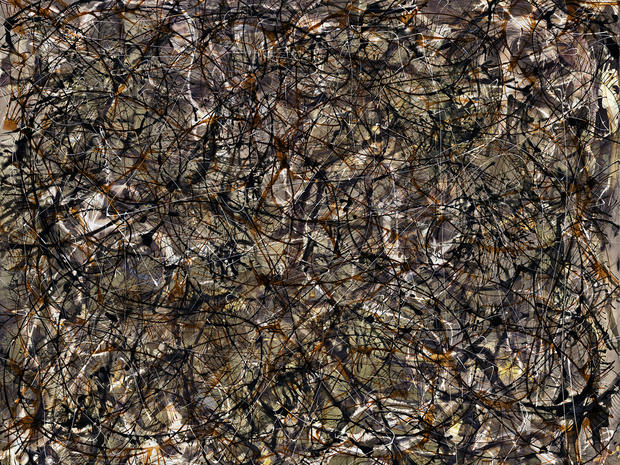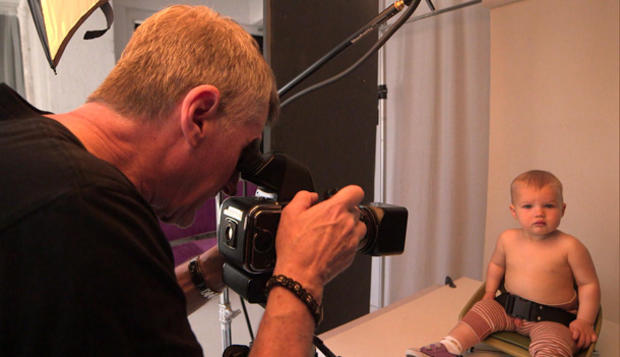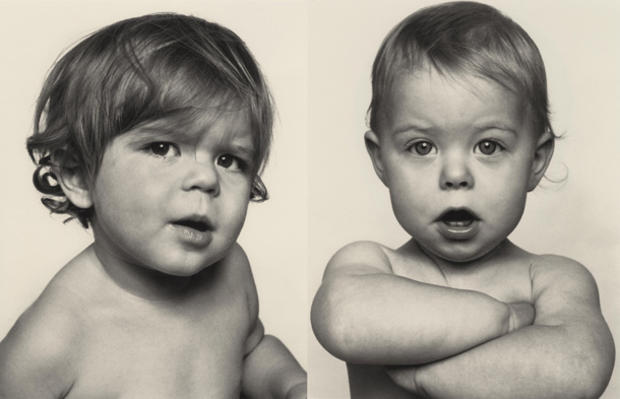The art of Edward Mapplethorpe
A 1989 portrait of singer Annie Lennox by Edward Mapplethorpe.
After years of working under a pseudonym, photographer Edward Mapplethorpe had reclaimed his family name - and is now living outside the shadow of his famed late brother, Robert. Their sibling rivalry was inseparable from their professional and personal relationships, and would color Edward's work for years after Robert's death in 1989.
By CBSNews.com senior producer David Morgan
Siblings
Edward Mapplethorpe is the younger brother of Robert Mapplethorpe, who became a prominent figure in the New York City art world in the 1980s. Edward was his earliest fan, and became a budding photographer himself.
But Robert offered no words of encouragement. In fact, he told Edward the world had room for only ONE Mapplethorpe. "He was very angry," Edward told CBS News' Serena Altschul, "and he made it quite clear that he wasn't going to be any sort of path to any sort of successful career for me, and strongly suggested that I consider changing my name. I thought he had a point. I never had any intention of [riding] the crest of his wave that he was creating. I always wanted to do it on my own. So I was like, 'Okay, why not?'"
And so Edward Mapplethorpe disappeared from the art scene. Taking his mother's maiden name, he became known professionally as Edward Maxey.
Melody
"Melody" (1988), from a series of nudes by Edward Mapplethorpe, working under the name Edward Maxey.
David LaChappelle
A 1984 portrait of David LaChapelle by Edward Mapplethorpe.
"Clouds"
"Clouds" (1989), from his series "Still Life Compositions" (1982-1992).
Julian Sands
Edward Mapplethorpe's 1989 portrait of actor Julian Sands.
Naomi Campbell & Isaac Hayes
A 1990 portrait of Naomi Campbell and Isaac Hayes by Edward Mapplethorpe.
Sandra Bernhard
A 1990 portrait of comedian Sandra Bernhard by Edward Mapplethorpe.
"Seascape"
Under the pseudonym Edward Maxey, Mapplethorpe worked on a series of landscapes and still lifes titled "Undercurrents" (1992-1994).
Pictured: "Seascape" (1992).
"Surface Study"
"Surface Study" (1992).
Stars
"American Flag No. 515" (1994), one of a series of images that transforms the Stars and Stripes into abstract elements.
Self-Portrait
A self-portrait of Edward Mapplethorpe from 1999.
Patti Smith
Singer Patti Smith, photographed by Edward Mapplethorpe in 2005.
"Empire State Building"
Edward Mapplethorpe's 2005 vision of the Empire State Building, reminiscent of Alfred Stieglitz's work.
"Variation No. 2"
One of Edward Mapplethorpe's series "Variations" (2011), for which the photographer applied colorless chemicals to traditional black-and-white photographic paper to produce gelatin silver prints highlighting many colors.
New York City gallery owner Michael Foley praised Mapplethorpe for his "ability to go beyond what he thinks is expected of him in photography and what's expected from photography in general. And to go beyond that for him is what sets him apart photographically not only from Robert, but from other traditional/historic photographers."
"Untitled"
"Untitled, No. 892" (2007). An example of Edward Mapplethorpe's images created in a darkroom, without a camera.
"Untitled"
"Untitled, No. 968" (2008). Gelatin silver lithographic print.
"Variations"
One of Edward Mapplethorpe's "Variations" prints (2013).
Baby Photos
Edward Mapplethorpe also does baby portraiture. He's taken hundreds of pictures, capturing little humans such as this on their first birthday. They are the subject of Mapplethorpe's first book, called "One: Sons & Daughters."
"One: Sons & Daughters"
Two of Edward Mapplethorpe's subjects, from his book, "One: Sons & Daughters" (powerhouse Books).
"TimeZones"
An installation view of Edward Mapplethorpe's series "TimeZones" (2008), nine 60 x 50" silver gelatin prints, each representing a single tone - from black to white - of the "Zone System" used in photographic printing.
For more info:
"One: Sons & Daughters" by Edward Mapplethorpe (powerHouse Books)
Foley Gallery, New York
